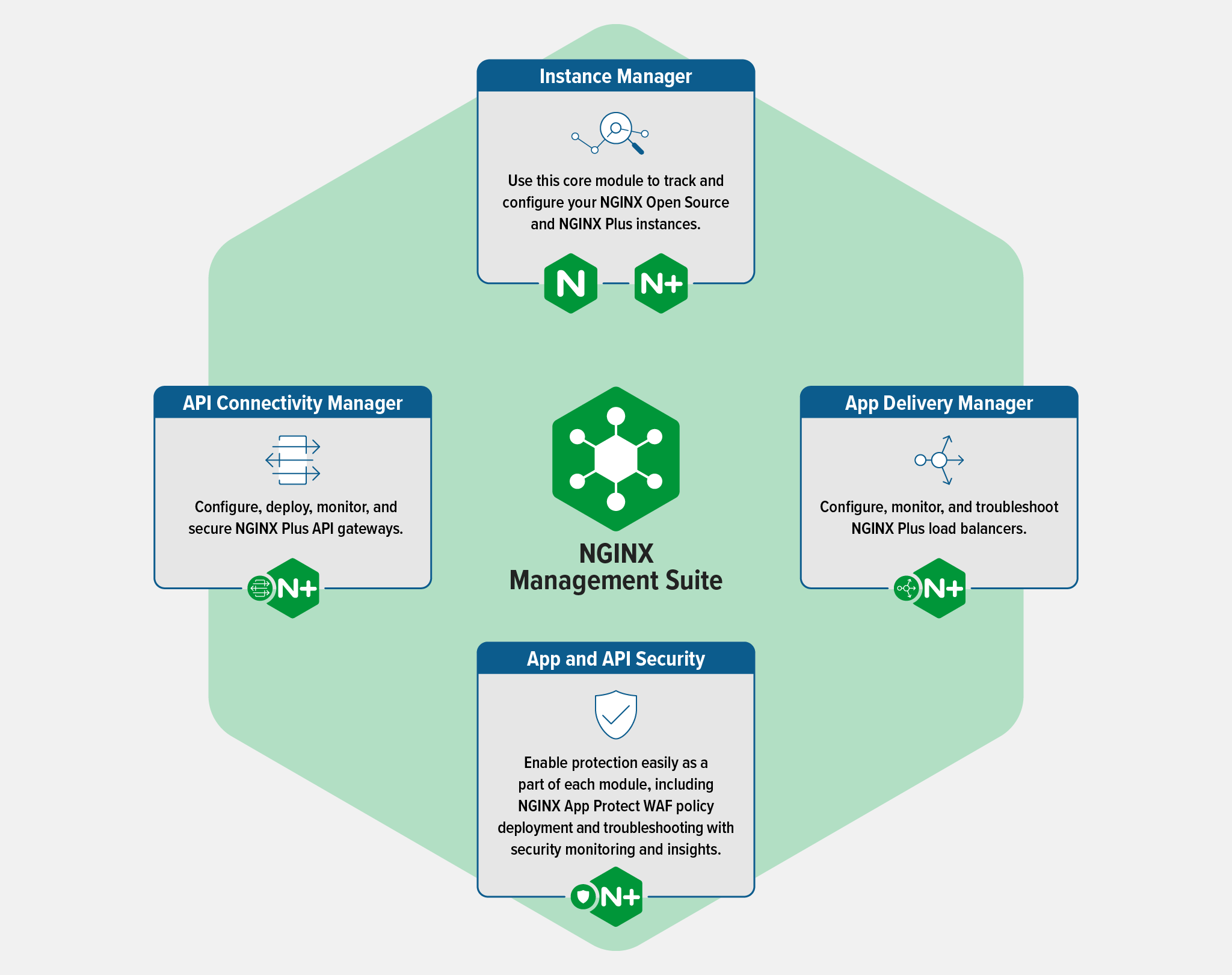F5 NGINX has revamped an implementation of its management suite as part of an effort to make the platform both more accessible and simpler to use.
Eric Braun, vice president of product management for F5 NGINX, said NGINX Management Suite 1.0 is based on a modular platform that makes it possible to dynamically scale instances of NGINX proxy software, application delivery services, application programming interface (API) management workflows and the company’s security offerings.
That approach makes it possible to automate the deployment of F5 NGINX software without relying on manual processes that are prone to misconfiguration, Braun noted.
The platform is based on a modern architecture that also makes it possible for administrators to enable development teams to self-service their own requirements within the limits of a set of policies defined via a portal, he added.
The NGINX Management Suite replaces NGINX Controller, a more monolithic platform that is not based on an API-first approach to managing services, said Braun.
The core modules of the NGINX Management Suite are an Instance Manager for the open source and commercial instances of the company’s proxy software, an API Connectivity Manager, App Delivery Manager and an App and API Security module. NGINX Management Suite will enable organizations to use NGINX App Protect Web Application Firewall (WAF) to protect applications and APIs while the App Delivery Manager module will be extended to enable configuring, securing, monitoring and troubleshooting of NGINX Plus when used as a load balancer.

The revamp of the NGINX management plane is the latest in a series of efforts to modernize application and IT infrastructure management using a microservices-based platform that more easily scales as more resources are required. The more modular approach also gives IT teams more granular control over how various modules are accessed.
It also makes it simpler for IT teams to deploy, for example, a service mesh or API gateway without having to add additional management platforms, noted Braun. That capability should significantly streamline the process of deploying those platforms because the need for a dedicated platform to manage them has been eliminated, he added.
It’s not clear to what degree that latter capability will enable IT organizations to shift responsibility for managing various tasks further left toward application development teams. However, it is clear application development teams want to be able to self-service their own IT requirements and make services available without intervention from a centralized IT organization. In effect, IT organizations are trying to strike a balance between the benefits of centralization and the need to build and deploy applications faster within the context of a DevOps workflow.
It may be a while before most IT organizations are able to consistently strike that balance. In the meantime, however, as IT management platforms continue to be modernized using APIs it should also become easier to integrate them. It will be up to each IT organization to then decide how many management platforms are going to be required, but at the very least, the various management silos that make up an IT environment today are finally starting to break down.





